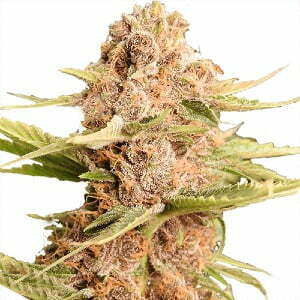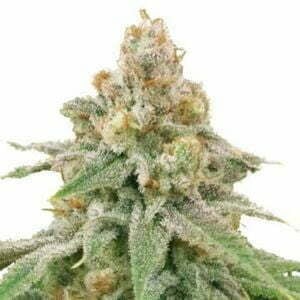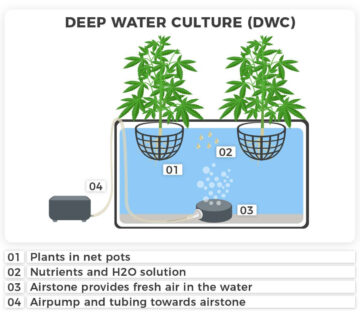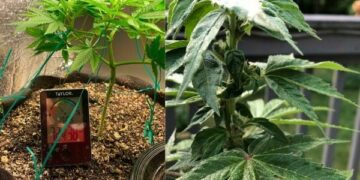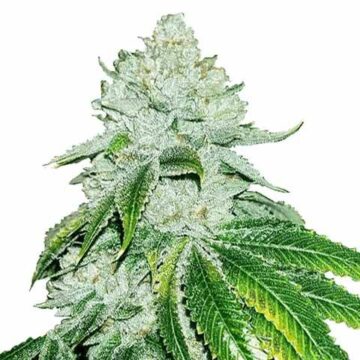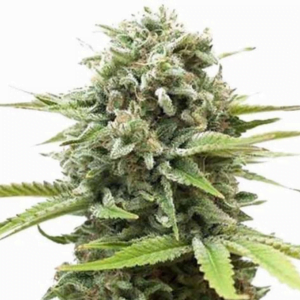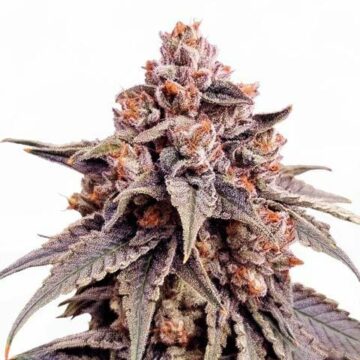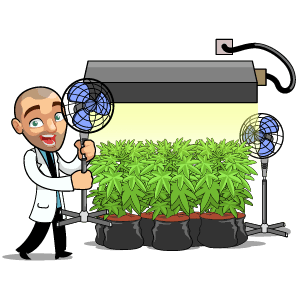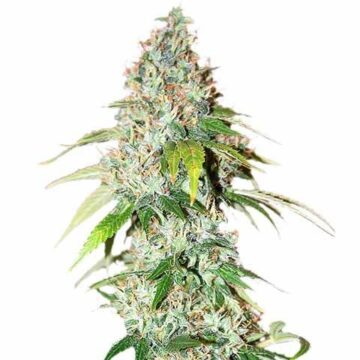To cultivate cannabis successfully, your plants need to have the right environmental conditions. Good air circulation around your plants is one of the most critical factors affecting their overall health. This is especially true indoors, where small problems can quickly turn ugly.
While it’s important to provide good air movement all around your plants, you can actually harm them by giving them too much direct air. This will cause a condition called cannabis wind burn. Let’s discuss cannabis wind burn and the ways to prevent it.
What is wind burn?
Wind burn is caused by the forceful movement of air directly on the plants’ leaves and stems, either from fans (indoors) or excessive winds (outdoors). Growing plants release water vapor through transpiration in balance with their surroundings, and excessive winds accelerate this process.
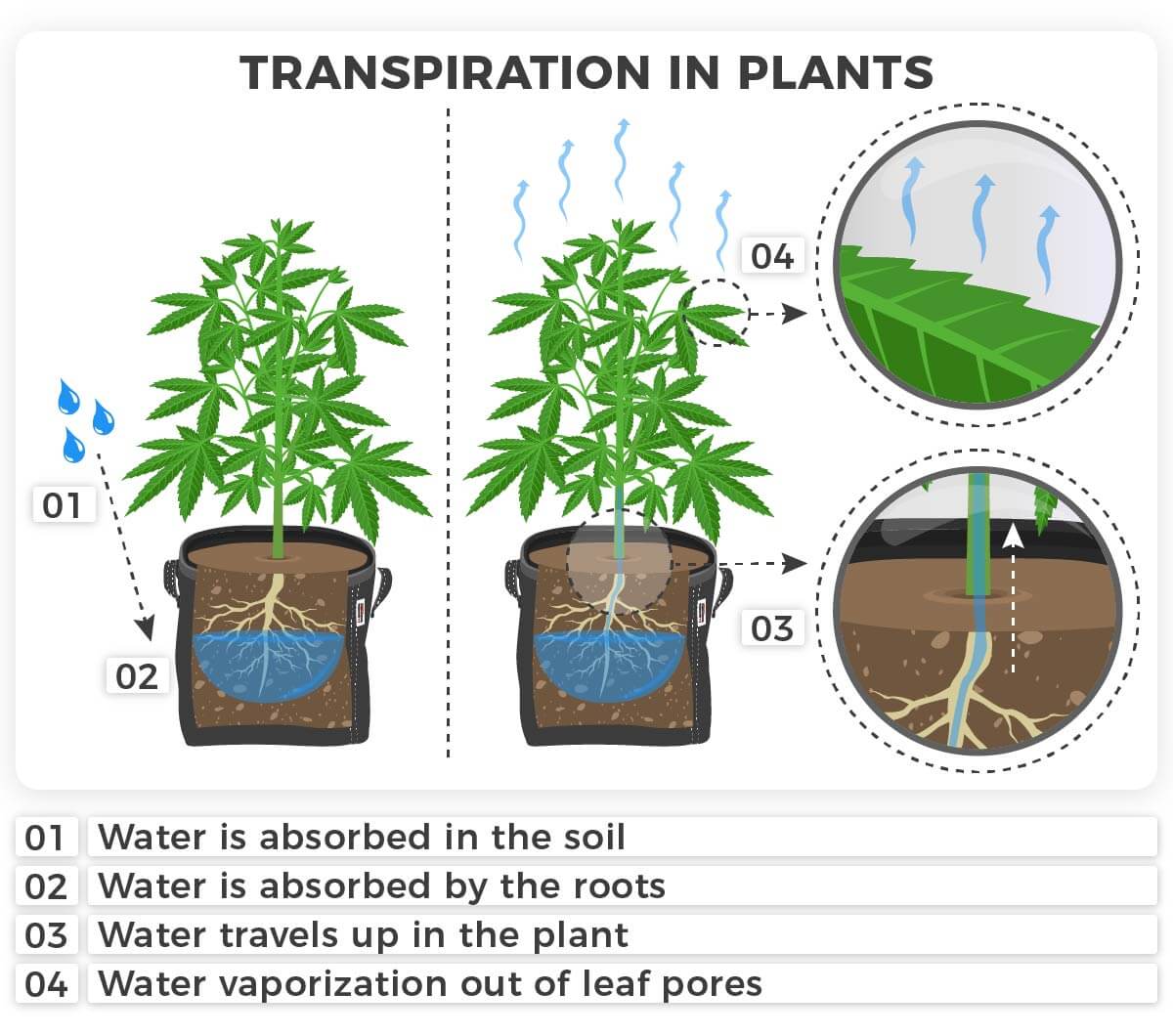

With the balance of moisture disrupted, water vapor is lost from the leaves and stems at a higher rate than the plant can replace it with. This strips the plant of necessary hydration and damages the hardest hit plant tissue.
Cannabis windburn can also weaken a plant’s overall health, making it more susceptible to other pests and diseases. Damaged plant tissue creates entry points for pathogens, increasing the chances of infections and affecting the plant’s ability to thrive.
Is too much wind bad for cannabis?
Cannabis plants are nearly 90% water and need constant air movement around them, especially indoors. Stagnant air slows down plant metabolism and allows moisture and dust to settle on the plant surfaces which leads to fungal diseases and pest problems.
Good air movement around your plants is necessary to keep transpiration at optimum levels. However, too much direct air on plants will dry out leaves and stems, causing affected foliage to grow in a stunted and twisted manner. In severe cases, the affected foliage can die off (necrosis).
While larger plants can tolerate a little more wind, smaller plants, and especially clones and seedlings should never have strong wind directly on their foliage.
Can indoor cannabis plants get wind burn too?
The issue of cannabis wind burn is primarily a bigger problem in indoor gardens. Limited space between plants and fans on walls and floors can force air directly onto foliage.
Using fans that are too large for a space, like a grow tent, can force air directly onto plants. Using smaller fans or fans with multiple speeds can help alleviate these issues.
Improper ventilation and exhaust (excess heat) can amplify the effects of wind burn. Executing proper grow tent air circulation and ventilation is a difficult task for many novice growers.
Can plants recover from wind burn?
Affected plants will recover from wind burn and resume normal growth once the proper changes to airflow and circulation have been made, however, severely damaged foliage won’t return to its normal shape and may remain discolored. Dead, damaged, or diseased foliage from wind burn should be removed entirely.
The effects of wind burn can be negated by aiming fans and airflow just above and below your plants, where it should be to begin with. Poor setup (and inexperience) are the biggest reasons why wind burn happens.
Consult our Weed Grow Bible for thorough instructions on setting up proper airflow in your grow.
What does wind burn look like on cannabis?
The symptoms of cannabis windburn are often distinct and recognizable. First, you may observe stunted or twisted growth of the affected leaves, or leaves curling downward from the tip, commonly known as leaf curling or “clawing.”
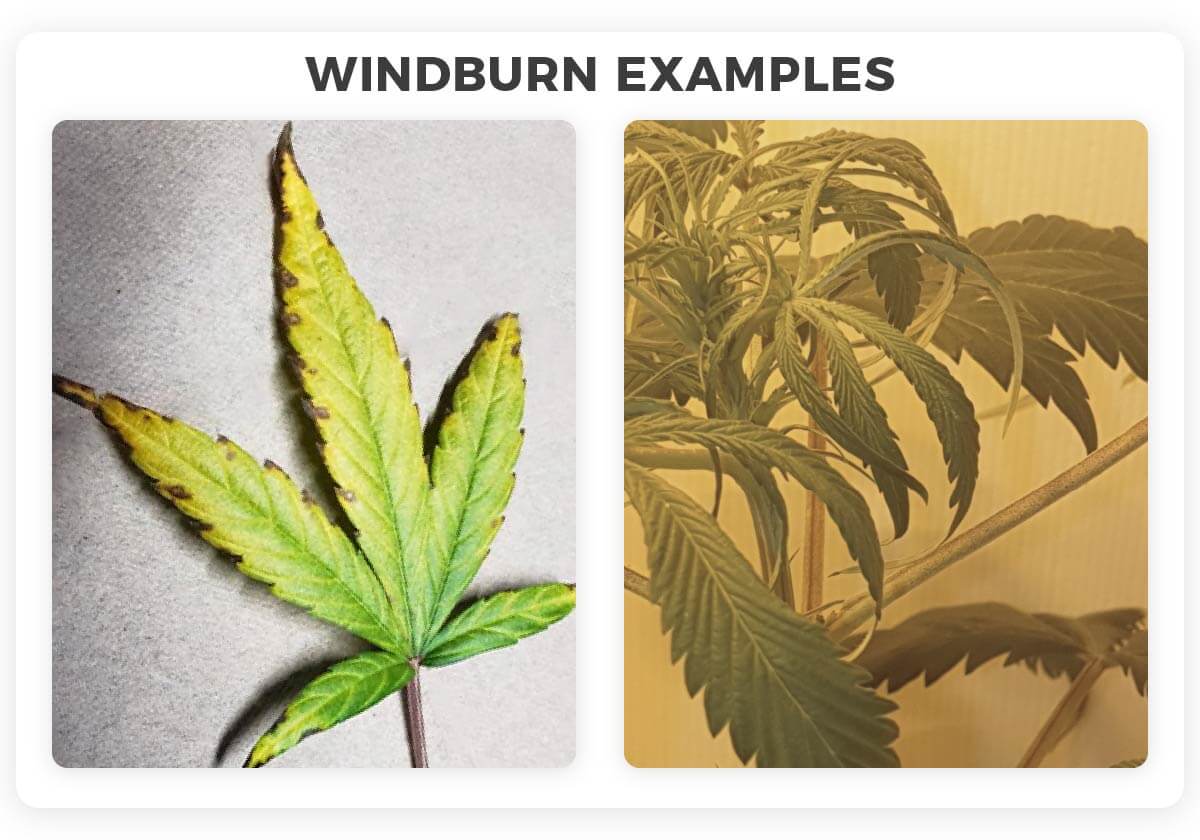

The leaves curl downward to protect themselves and it resembleas a claw. Leaf edges will dry out and become necrotic. Under severe conditions, the leaves become withered, shrivel, and ultimately die off due to dehydration.
Another sign is the appearance of small yellow, brown, or bronze spots that gradually spread across affected leaves. The leaf tissue in these areas are dead or dying.
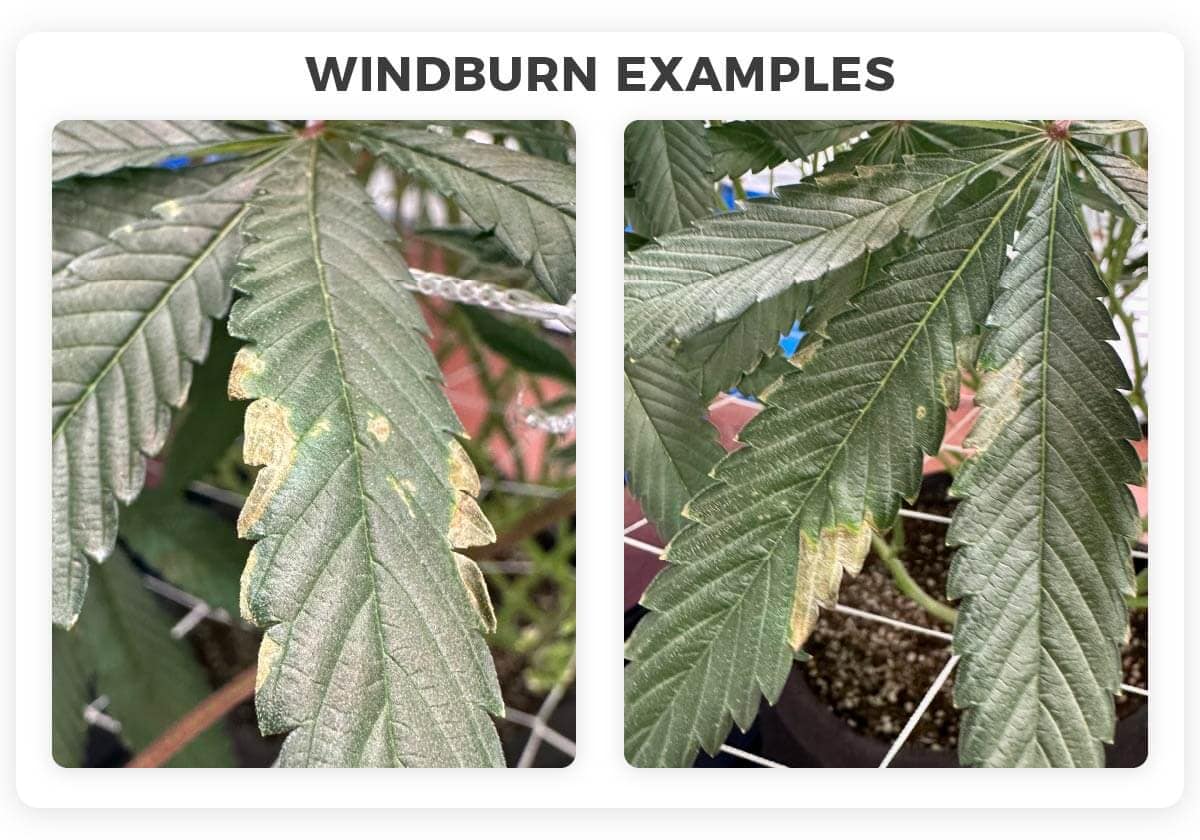

Common misdiagnoses
The most obvious difference between wind burn and other visible plant deficiencies is the location of the affected foliage. Wind burn affected foliage will be directly in the path of the wind and as close to the offending fan(s) as possible.
Wind burn damage occasionally looks similar to other plant problems like overwatering or overfeeding, which can cause leaves to curl downward and damage the tips and edges.
Plant deficiencies tend to affect specific plant parts, and wind burn damage is no different. The location of a plant deficiency will give you the best clue as to the source, so pay close attention and take notes if necessary. Learn by observation.
How do you treat wind burn on cannabis plants?
To treat and prevent wind burn indoors, you’ll need to adjust your fan position & aim, adjust your fan speed, or both. You want good air movement around your plants, not directly on them, so aim your fans just above and below the canopy where they will circulate air through your plants without damaging them.
Wall fans should oscillate (move side to side) to optimize circulation. You want to see leaves moving and rustling gently, not rocking and whipping violently back and forth. It’s like when you see trees outside in a gentle breeze vs high winds. It’s the same thing with the wind in your garden.
If you’re in a small grow space, like a grow tent or a closet, then you may need to aim your fan at a wall or the ceiling to circulate the air around indirectly, without damaging your plants.
Grow tents also have vent holes that can be used with inline fans to pull air through the tent from floor to ceiling. This will provide both adequate air movement and exhaust the warm air coming from your lights.
You won’t be able to bring back the foliage that is severely damaged or dead, so be sure to prune (cut off) this foliage as soon as possible. Severely damaged plants will require extra time to grow back to where they were before the wind burn happened.
There are anti-transpirant sprays that you can use to prevent plant tissue from drying out excessively in situations where you cannot control the wind exposure or move plants around to avoid wind burn.
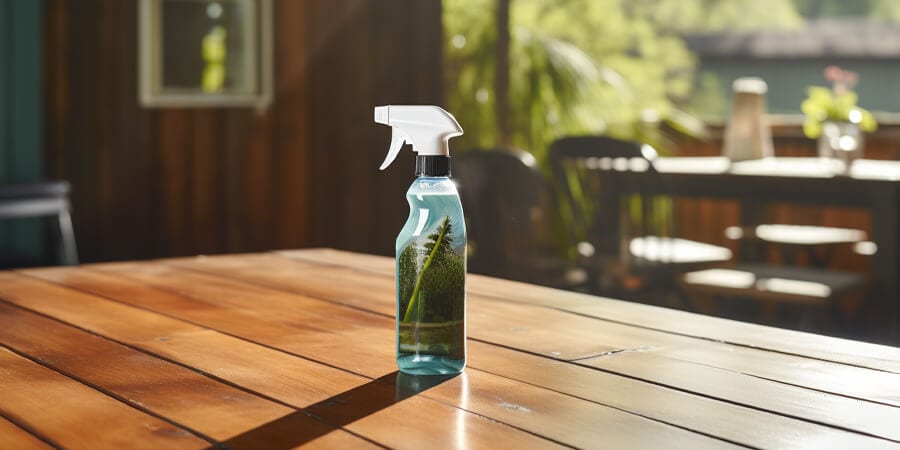

How do you protect outdoor cannabis from wind burn?
Prevention and planning is the key to protecting your outdoor plants from wind burn. If you’re growing outside, you will want to scout your growing area for windy conditions and avoid planting in those spots if possible.
You may need to use objects that can act as wind breaks, such as solid fencing or trees and shrubs that you can plant behind for protection. You can use other types of potted plants or objects like tarps if there is nothing else available, just make sure you leave enough space for air and light to reach your plants.
I have used pruned bamboo as a both a hedge and windbreak for my cannabis plants to screen them from wind and wandering eyes. Keep topping the bamboo so that it spreads out wide and forces new shoots to spring up.
How do you protect indoor cannabis from wind burn?
Again, prevention is the best way to protect your plants from wind burn. Use advanced planning. Always setup and test drive your grow space before adding plants.
Turn on all the lights and fans and see if you can feel any hot spots or a lack of circulation in the room. Make adjustments, and when it feels right, add your plants. Double check things every couple of weeks, or as necessary, throughout the first grow cycle to make sure conditions are optimized for a successful grow.
Use floor fans, inline fans, or squirrel cage fans to circulate air underneath the plants or between rows. Reposition fans if necessary; aim them above and below the canopy or at a wall to safely circulate air around and through the foliage. Learn about the best ways to setup a grow room and avoid wind burn, pest issues, and more with Robert’s Grow Bible.
- SEO Powered Content & PR Distribution. Get Amplified Today.
- PlatoData.Network Vertical Generative Ai. Empower Yourself. Access Here.
- PlatoAiStream. Web3 Intelligence. Knowledge Amplified. Access Here.
- PlatoESG. Carbon, CleanTech, Energy, Environment, Solar, Waste Management. Access Here.
- PlatoHealth. Biotech and Clinical Trials Intelligence. Access Here.
- Source: https://www.ilovegrowingmarijuana.com/growing/troubleshooting/cannabis-wind-burn/
- :is
- :not
- :where
- $UP
- 1
- a
- ability
- Able
- About
- above
- accelerate
- across
- Act
- actually
- add
- adding
- adjust
- adjustments
- advanced
- affect
- affected
- affecting
- aim
- Aiming
- AIR
- All
- alleviate
- allows
- also
- always
- amplify
- and
- any
- ARE
- AREA
- areas
- around
- AS
- At
- attention
- available
- avoid
- back
- Bad
- Balance
- Bamboo
- BE
- become
- been
- before
- begin
- behind
- below
- BEST
- between
- bigger
- Biggest
- both
- breaks
- breeze
- bring
- brown
- burn
- by
- called
- CAN
- cannabis
- cannot
- Canopy
- cases
- Cause
- caused
- causing
- ceiling
- chances
- Changes
- check
- Circulation
- Close
- coming
- commonly
- condition
- conditions
- constant
- control
- Couple
- creates
- critical
- Cultivate
- Cut
- cycle
- damage
- damaging
- dead
- Die
- difference
- different
- difficult
- direct
- directly
- discuss
- diseases
- distinct
- do
- does
- double
- down
- downward
- drive
- dry
- due
- Dust
- Dying
- edges
- effects
- either
- else
- enough
- entirely
- entry
- environmental
- especially
- Ether (ETH)
- Every
- example
- examples
- excess
- excessively
- executing
- Exposure
- extensive
- extra
- Eyes
- factors
- fan
- fans
- feel
- fencing
- First
- Floor
- floors
- For
- Force
- Forces
- forth
- from
- Garden
- Gardens
- gentle
- get
- Give
- Giving
- good
- gradually
- Grow
- growers
- Growing
- Growth
- happened
- happens
- harm
- Have
- Health
- hedge
- help
- High
- higher
- Hit
- Holes
- HOT
- How
- How To
- However
- HTTPS
- hydration
- if
- important
- in
- increasing
- indirectly
- Indoor
- Infections
- instructions
- issue
- issues
- IT
- ITS
- Jim
- jpg
- just
- Keep
- Key
- known
- Lack
- large
- larger
- Leads
- LEARN
- Leave
- levels
- light
- lights
- like
- Limited
- little
- location
- Look
- look like
- LOOKS
- lost
- made
- make
- Making
- manner
- many
- max-width
- May..
- more
- most
- move
- movement
- moving
- much
- multiple
- my
- nearly
- necessary
- necrosis
- Need
- never
- New
- no
- normal
- Notes
- nothing
- novice
- objects
- observe
- obvious
- occasionally
- of
- off
- often
- on
- once
- ONE
- onto
- Optimize
- optimized
- optimum
- or
- Other
- our
- out
- Outdoor
- outdoors
- outside
- overall
- parts
- path
- Pay
- Pictures
- planning
- plant
- Planting
- plants
- plato
- Plato Data Intelligence
- PlatoData
- points
- poor
- position
- possible
- prevent
- Prevention
- primarily
- Problem
- problems
- process
- proper
- protect
- protecting
- protection
- provide
- quickly
- Rate
- reach
- reasons
- Recover
- release
- remain
- Removed
- replace
- require
- resume
- return
- right
- Room
- s
- safely
- same
- Scout
- Screen
- see
- setting
- settle
- setup
- severe
- severely
- Shape
- should
- side
- sign
- similar
- situations
- slows
- small
- smaller
- So
- solid
- Soon
- Source
- Space
- specific
- speed
- speeds
- spots
- spread
- Spreads
- spring
- stems
- strong
- successful
- Successfully
- such
- sure
- susceptible
- Symptoms
- Take
- Task
- tent
- test
- than
- that
- The
- The Source
- their
- Them
- themselves
- then
- There.
- These
- they
- thing
- things
- this
- those
- Thrive
- Through
- throughout
- time
- tip
- tips
- tissue
- Title
- to
- too
- treat
- Trees
- true
- TURN
- types
- Ultimately
- under
- use
- used
- using
- vs
- Wall
- want
- warm
- Water
- Way..
- ways
- Weeks
- were
- What
- What is
- when
- which
- why
- wide
- Wikipedia
- will
- wind
- winds
- with
- without
- yellow
- you
- Your
- zephyrnet

